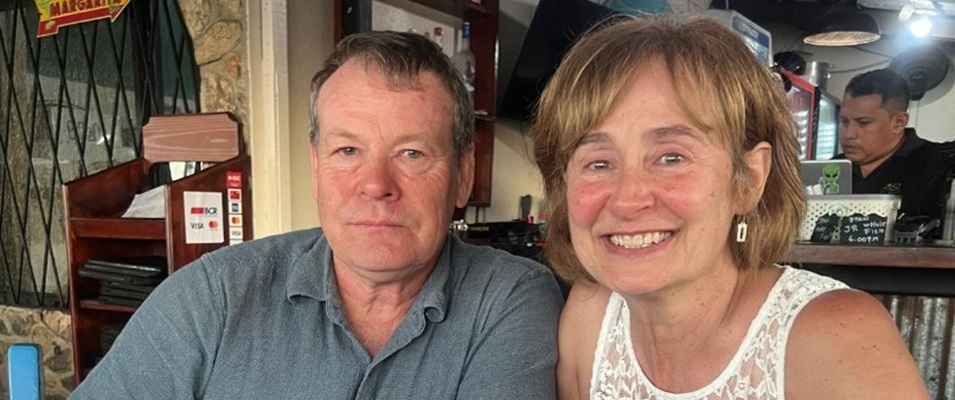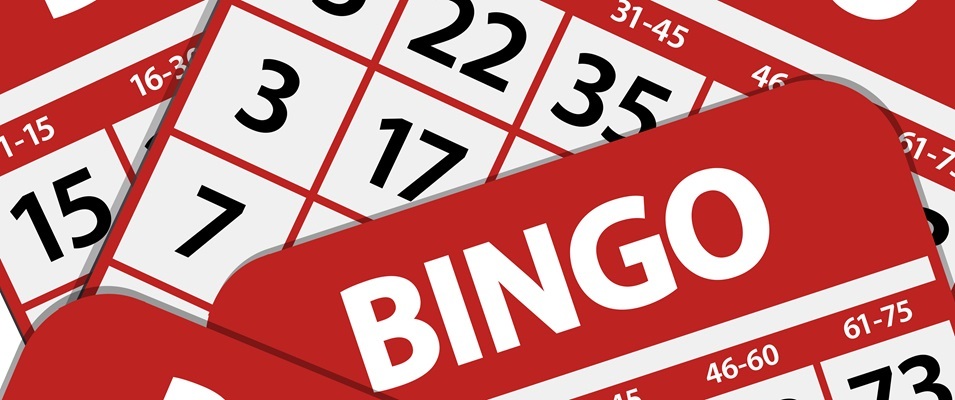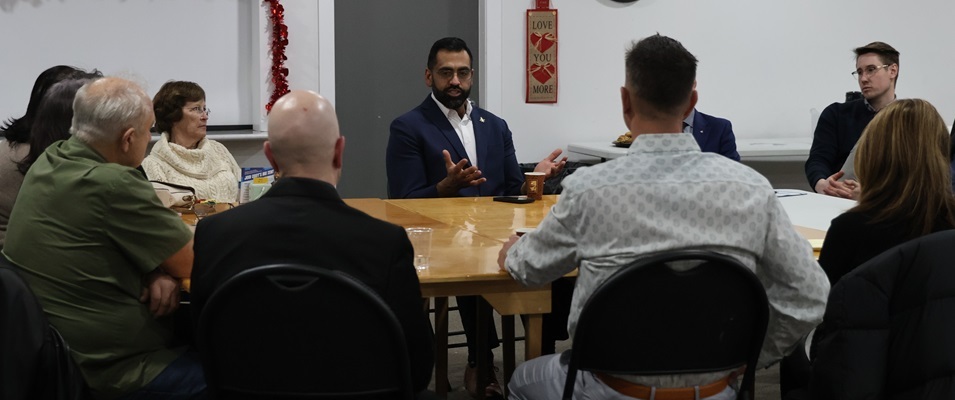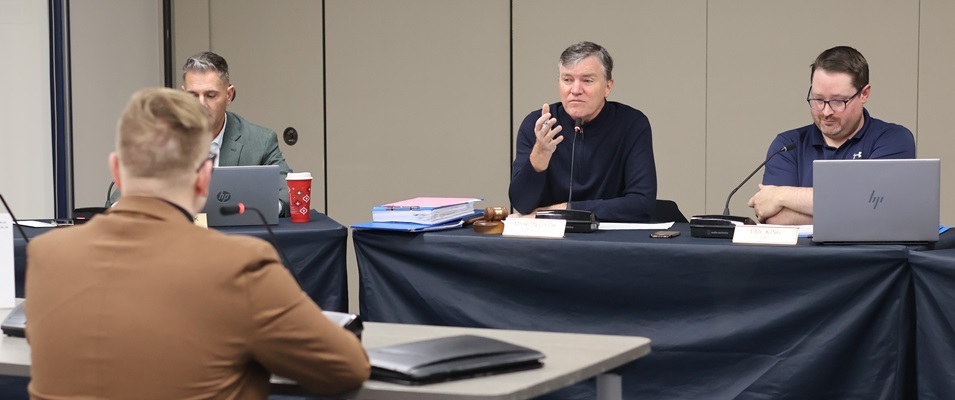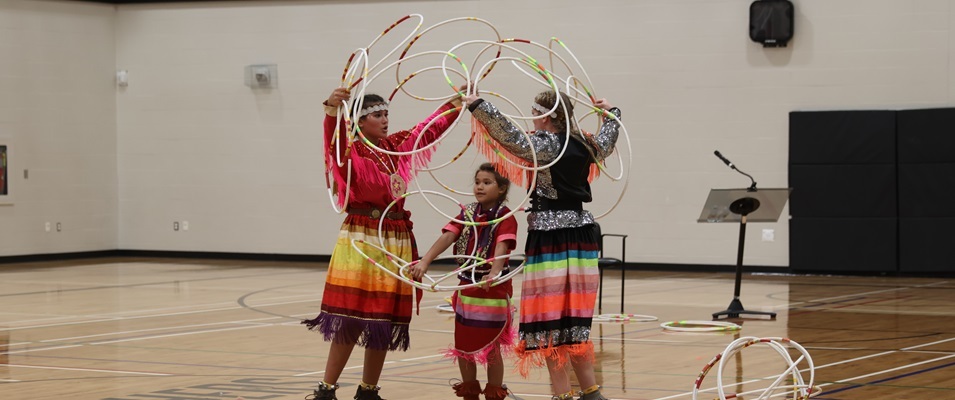
In Indigenous tradition, hoop dancers are storytellers, and that’s exactly what the Mason sisters—Kimberly, Charisma, and Nakiyah—came to Niverville High School (NHS) on Tuesday, September 24 to do.
In honour of Truth and Reconciliation Week, teachers and students at NHS are participating in a series of meaningful ways to help capture the essence of what it means to recognize and reconcile with darker aspects of Canada’s past.
Raelyn Voulgaris is the learning support teacher at NHS. She says that a number of the school’s teachers over the past couple of years have been instrumental in developing lessons that look at Indigenous history and culture, both past and present.
Much of Truth and Reconciliation Week at NHS will be dedicated to those lessons.
“We are taking time to talk about the importance of not just Orange Shirt Day but what truth and reconciliation is,” Voulgaris says. “What does it mean to us as Canadians and what does it mean to us as Nivervillians?”
To add richer meaning to those lessons, students will also participate in a hands-on art project of tile painting. Each student will attempt to depict, on their tile, what truth and reconciliation means to them. At some point, these will be combined into a larger art project to be determined by the school’s art teacher.
On Friday, NHS students will also join the other Niverville schools in a Walk for Reconciliation.
Visiting the school through the course of the week is an Indigenous elder from Roseau River First Nation, there to answer any questions students may have.
“We offered him tobacco last year and asked him to be our school community elder,” Voulgaris says. “That’s our goal, is inviting community [into the school]. We want to know who has gifts in our community that they can share.”
As noted by the popularity of the Ribbon Skirt Club at NHS, Voulgaris says students have been embracing Indigenous teachings at NHS in a very positive way over the past couple of years.
Canada’s role in the treatment of the Indigenous peoples is something Voulgaris says the education system has ignored for too long. Truth and Reconciliation Week, she adds, is a step in the right direction for creating a better future for all.
“If you hear Justice Murray Sinclair talk about it, it’s not going to happen in one generation,” Voulgaris says. “It took six generations plus to get us where we are today. I think it’s really important to recognize that it’s a systemic issue, especially in the education system. It’s our duty as teachers… to make sure that kids are seeing stuff like these young women who are reclaiming their culture, and that’s reconciliation.”
The young women she refers to are the Mason sisters, invited to NHS along with their parents to perform a hoop dancing demonstration.
The eldest Mason Sisters, 15 and 16 years old, have been hoop dancing for just over nine years. Together they have performed at events across western Canada.
Most recently, they competed in the hoop dance world championship in Phoenix, Arizona. They ended up just a few points shy of making top five.
Seven-year-old Nakiyah, too, placed eight out of 70 dancers in the children’s category.
On Tuesday morning, they performed in the NHS gym.
“Not too long ago, Indigenous people weren’t allowed to express their culture,” Kimberly told the gathered students. “[They] weren’t allowed to grow their hair long, speak their language, or wear the regalia like we are today. Some who could dance practiced in secret so they weren’t caught and punished. But our people are resilient and they stayed strong.”
Amidst the storytelling, the three brightly dressed dancers performed to recorded music, moving to self-choreographed dances. Each dance, they explained, tells its own story of life.
“If you watch very carefully, you may see an eagle come down with his outstretched wings, flying toward the bright open sun,” Charisma said. “Or a hunter in the tall grass, aiming and shooting his bow and arrow towards his prey.”
Hoop dancing is also viewed as a healing dance, they added, offering healing to whoever watches the story unfold.
“The [first] hoop represents the world and its circle of life,” Kimberly says. “It has no beginning or end, and each and every one of us are a special part of it. The second hoop and third hoop represent you and me. When we make connections, we gather to understand each other and make our roles in life stronger.”
For a brief time, the young ladies were joined by a group of NHS students, teachers, and the principal to participate in some hoop dance formations.
“The way you came up here, open-hearted and open-minded, that is called reconcili-action,” Kimberly says. “You are taking matters into your own hands and turning it into something good.”
The ceremony also included an audio clip that included many difficult-to-hear historical details as relayed by Chief Dr. Robert Joseph, a First Nations elder and residential school survivor.
But the Mason sisters’ performance was about more than just addressing the injustices of the past. It was a story of celebration of all peoples.
“Not only do we want to inspire Indigenous and non-Indigenous people to unite, learn, celebrate, and heal,” Kimberly says, “we also want to inspire each of you guys to step up and embrace your own culture, as each culture is beautiful and deserves to be embraced.”
Parents Russell Mason and Ginger Johnson were there to support their daughters. Together they have nine children, the youngest of which is four months old.
Johnson says her eldest daughters were just four and six when they developed a deep fascination with hoop dancing. Since then, they’ve been virtually unstoppable in their passion for both the art and reconnection with their Cree identity.
As a family, they’ve constructed their own hoops and created their own bright regalia embellished with traditional beadwork.
The oldest girls are enrolled in online learning with the Manitoba First Nations Education Resource Centre (MFNERC). Through this program, languages like Cree are being reintroduced to Indigenous students.
The language was seeemingly lost with Kimberly and Charisma’s maternal grandmother, but now Johnson is learning her native tongue for the first time through her daughters.
“In school and in certain places, [my mother] didn’t feel safe using her language,” Johnson told The Citizen. “She was trying to protect me and I didn’t understand. I said, ‘Mom, can you please just teach me?’ But she didn’t. She wanted me to fit in with the community that, at the time, was mostly non-Indigenous. And so she felt that was the safest.”
As for the message the Mason sisters convey through their art, Kimberly says it’s one they take very seriously.
“When we provide an education, we have to seek out the right information to provide,” says Kimberly. “We really, truly feel this is such a responsibility, but we feel extremely joyful and thankful at the end of the day… We were taught that we dance for one person. Even if one person shows up, we give our best.”






